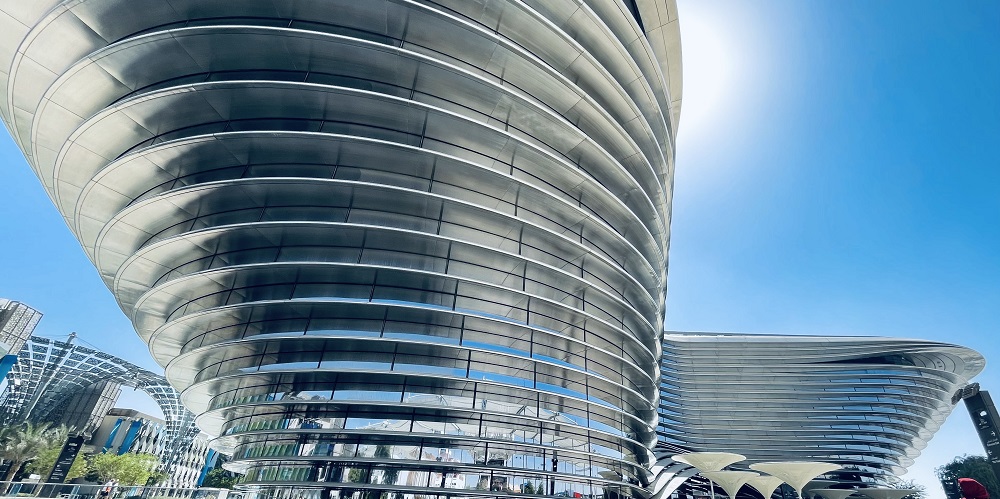Mobility Pavilion
Alif was one of the three themed pavilions of the EXPO2020 world exhibition in Dubai.

The Mobility Pavilion was one of the three themed pavilions at EXPO2020. It hosted performances, events and demonstrations dedicated to mobility with the aim of promoting creativity, innovation and collaboration worldwide.
Alif
The name 'Alif' refers to the first letter of the Arabic alphabet and symbolises the beginning of progress. The pavilion is characterised by its unusual shape, which when viewed from above is reminiscent of a fidget spinner.
The building is 25 metres high and consists of three floors that can be reached by the world's largest passenger lift. This lift can accommodate more than 160 people; 38 when taking into account the 1.5-metre spacing.
The building was designed by award-winning design firm Foster&Partners. Strict sustainability standards have been taken into account in the design. For instance, it is self-shading, heat is reflected by the metal cladding and there are solar panels on the roof.

CURVED ALUMINIUM FAÇADE CONSTRUCTION
For the facade construction, Kersten bent, cut to size and heat-treated 7 different aluminium extrusion profiles. The profiles were used to connect the main steel structure with the glass of the windows and the slats on the outside.
Some of these profiles contain a thermal break for the purpose of insulating the building. Here, it is important for the bending process that the rubber is not rolled in too tightly and can move with the rolling movement of the bending machine. In this way, both aluminium parts of the profile are bent to the right radius in one process run. Because the structure extends wider and wider towards the top, the profiles are bent in different radii.
Kersten was involved in this project at an early stage. Here, we advised our client's drawing office and purchasing department on the ideal profile cross-sections and had direct contact with the project leader and the construction team on-site.
In total, Kersten produced over 2,000 aluminium curved profile parts. Inspecial transport crates were used to ship the parts to the United Arab Emirates.